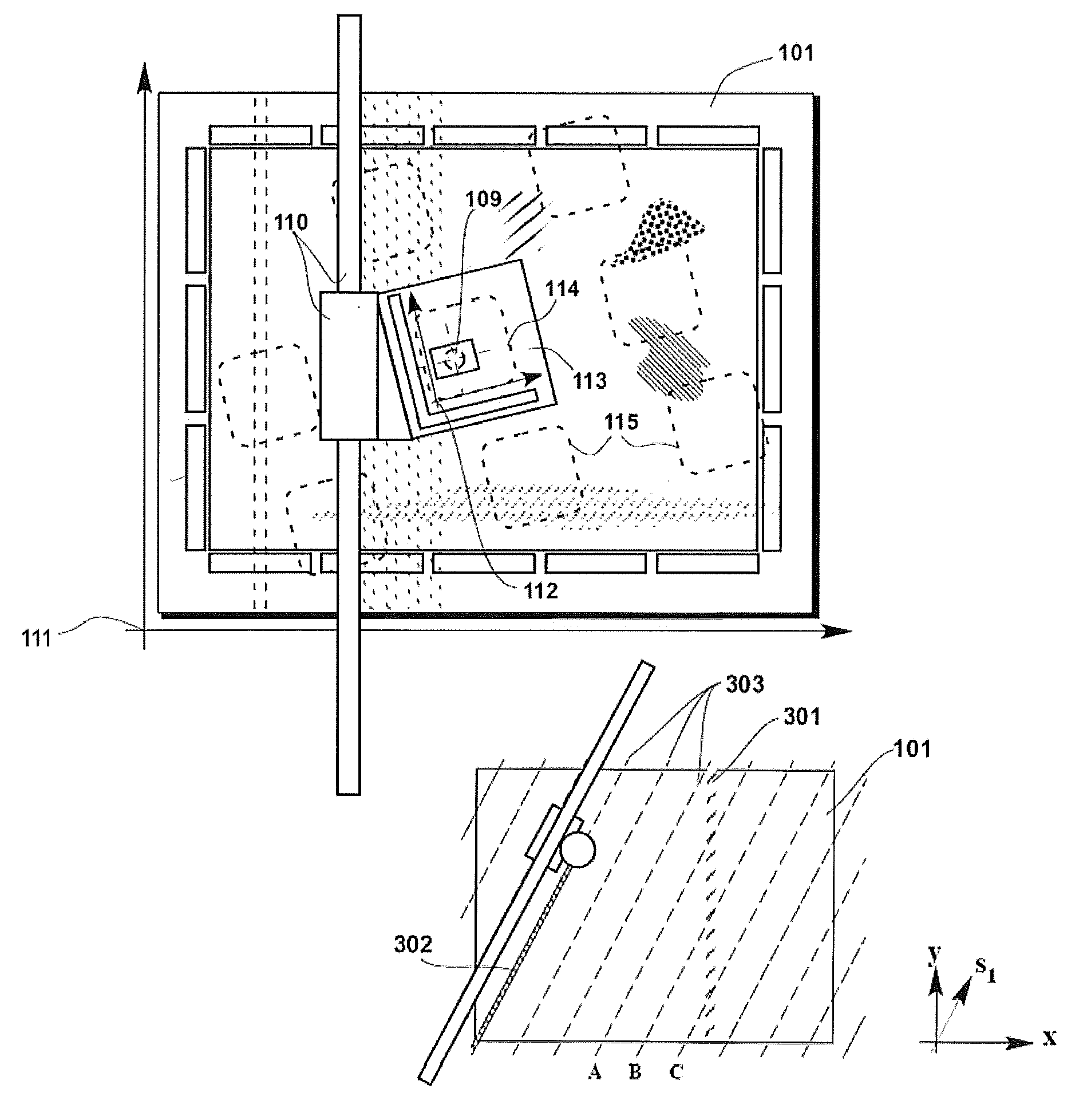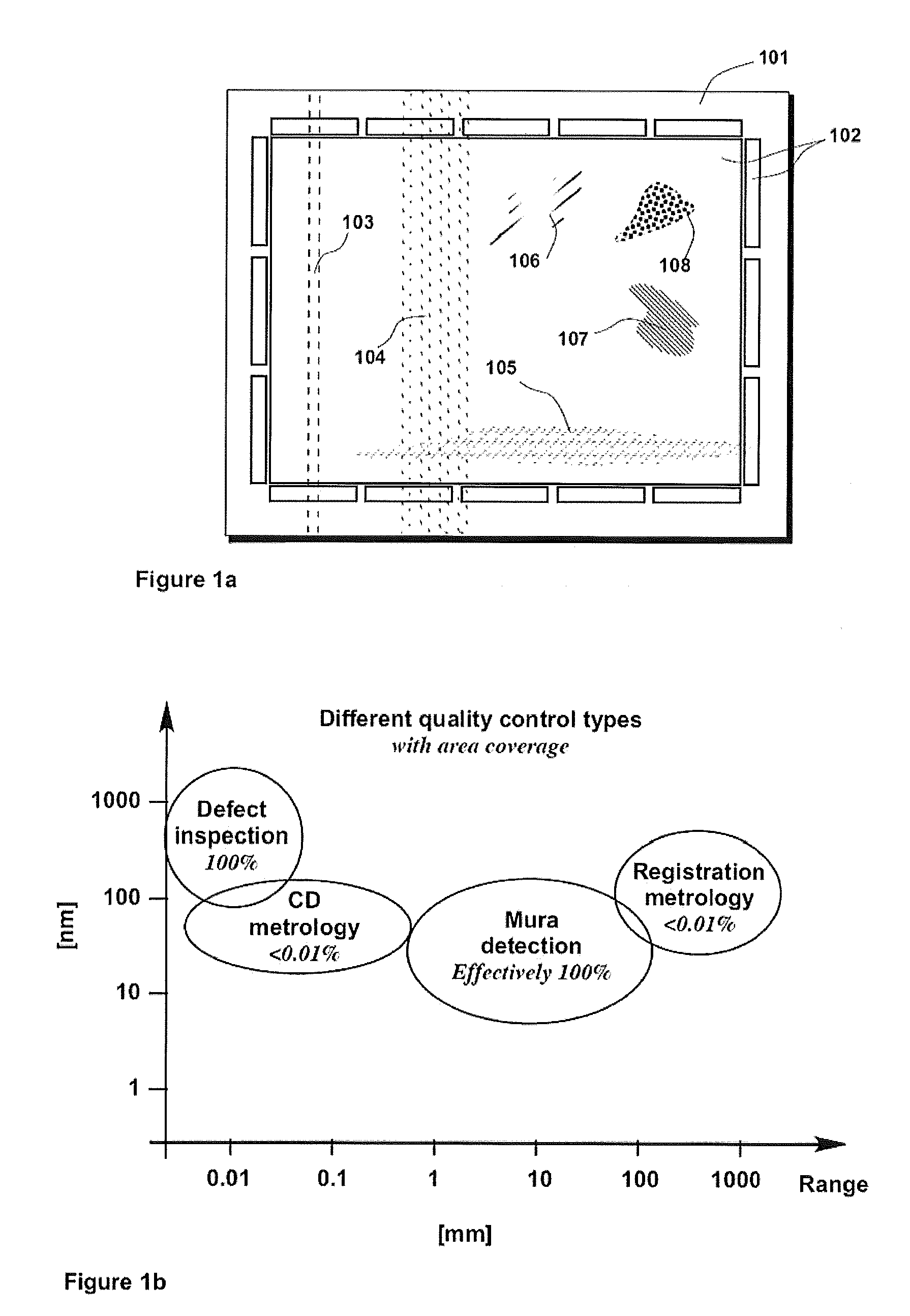Method and apparatus for mura detection and metrology
a detection method and metrology technology, applied in the field of quality control, can solve the problems of affecting the quality of mura detection,
- Summary
- Abstract
- Description
- Claims
- Application Information
AI Technical Summary
Problems solved by technology
Method used
Image
Examples
Embodiment Construction
[0030]The following detailed description is made with reference to the figures. Preferred embodiments are described to illustrate the present invention, not to limit its scope, which is defined by the claims. Those of ordinary skill in the art will recognize a variety of equivalent variations on the description that follows.
[0031]The underlying errors causing the mura may be of many kinds, only some of which have been recognized or understood in the art. One cause is a variation in the open or light sensitive areas, e.g. a variation in the width of the black matrix masking the transistor and the boundary between pixels in an LCD display. Every pixel in an active display has at least one transistor with a gate which is much smaller than the size of the LCD pixel, thereby being much more sensitive to line width variations. The edge profile of the different layers may also vary and give rise to mura. Line width, shape and edge variations are intra-layer effects, i.e. they can be detect...
PUM
 Login to View More
Login to View More Abstract
Description
Claims
Application Information
 Login to View More
Login to View More - R&D
- Intellectual Property
- Life Sciences
- Materials
- Tech Scout
- Unparalleled Data Quality
- Higher Quality Content
- 60% Fewer Hallucinations
Browse by: Latest US Patents, China's latest patents, Technical Efficacy Thesaurus, Application Domain, Technology Topic, Popular Technical Reports.
© 2025 PatSnap. All rights reserved.Legal|Privacy policy|Modern Slavery Act Transparency Statement|Sitemap|About US| Contact US: help@patsnap.com



